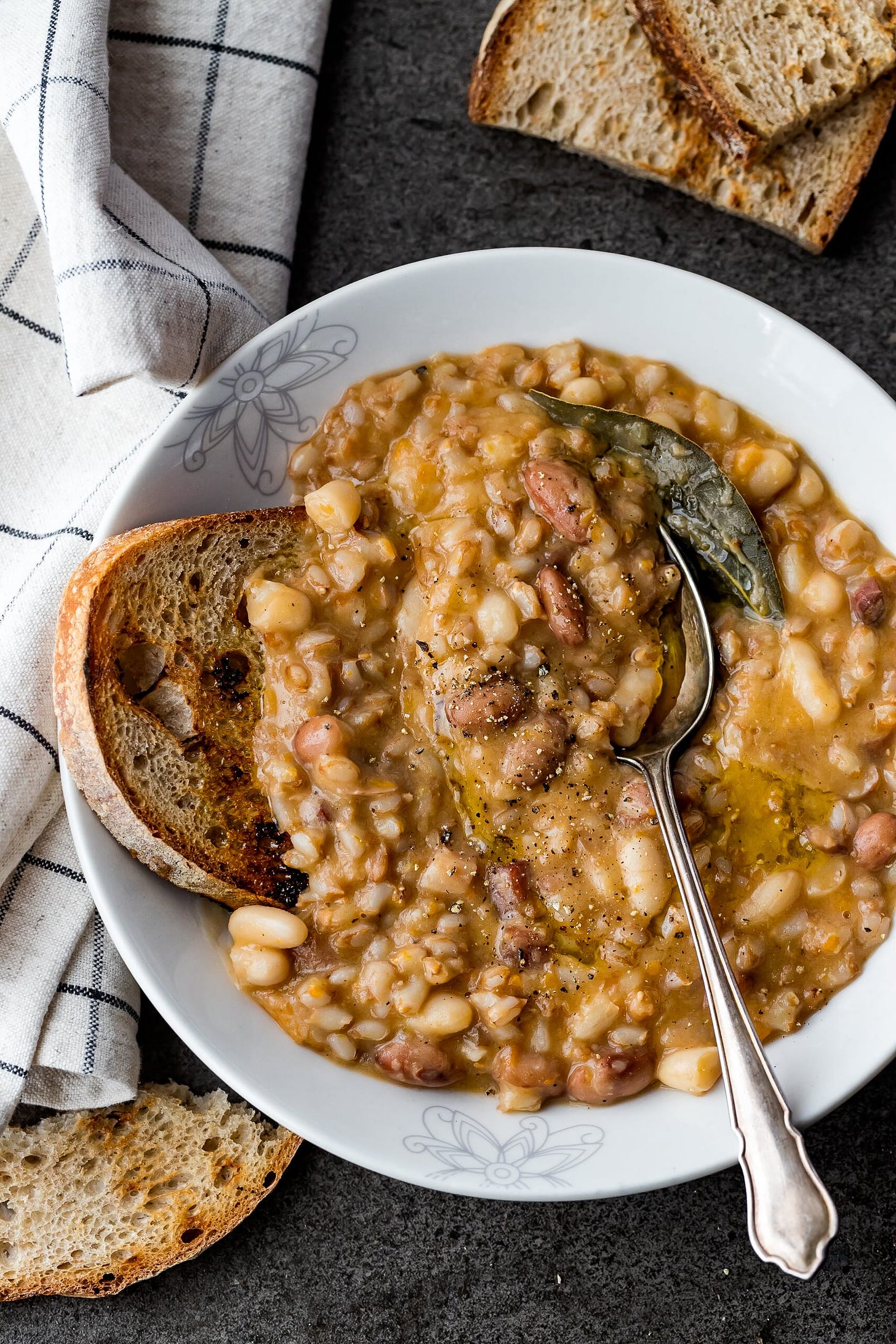Zuppa di farro della Garfagnana - Bean and farro soup from Garfagnana
Farro has a lovely chewy texture, it’s nutty and hearty, and makes a comforting, easy soup when paired with beans and some basic aromatics.
This is an exclusive recipe for the subscribers. It is part of a serialized Tuscan cookbook that you will receive over the course of one year, a collection of tested classic Tuscan recipes to add to your cooking repertoire. Learn more about the I Love Toscana project here and find all the recipes here. You can upgrade and get access to this, as well as all our monthly cook alongs and live talks, on the link above.
Farro is the the oldest cereal grown by men, known since the seventh millennium BC in Mesopotamia, Syria, Egypt and Palestine. It then became the basic food of the diet of the Latin peoples, who used to make polenta and bread out of farro flour.
Rich in protein and vitamins, it slowly releases energy combined with vegetables, fruit and cheese: it was therefore recognized as the founding element of the Roman military power – farro and not ferro (iron) helped the Romans conquer the world and create the immortal empire.
With the introduction of other varieties of cereals, thought, the farro farming slowly disappeared, except in a few areas traditionally linked to this cereal.
In Tuscany farro is farmed from immemorial time and without interruption in Garfagnana, where there are still nearly 100 companies that produce the IGP farro, made unique by the indissoluble bond with the territory where it is grown, the climate and the altitude.
The local farro is at the origin of many local Cucina Povera recipes such as zuppa di farro and a sweet farro and ricotta tart.
Farro has a lovely chewy texture, it’s nutty and hearty, and makes a comforting, easy soup when paired with beans and some basic aromatics. Clean, simple flavours and ingredients don’t mean boring food, indeed, it is quite the opposite, and this soup is a great example.
RECIPE - Zuppa di farro della Garfagnana - Bean and farro soup from Garfagnana
To make a real farro soup from Garfagnana you'd need local varieties of beans such as scritto, bianco and rosso of Garfagnana, that you can often buy in local hole in the wall shops. However, you can successfully replace those beans with cannellini, borlotti or cranberry beans, as I made in this soup. Opt for a variety of beans rather than for just one kind of bean: this add layers of flavors, textures, and colours that make every soup or stew more interesting.





